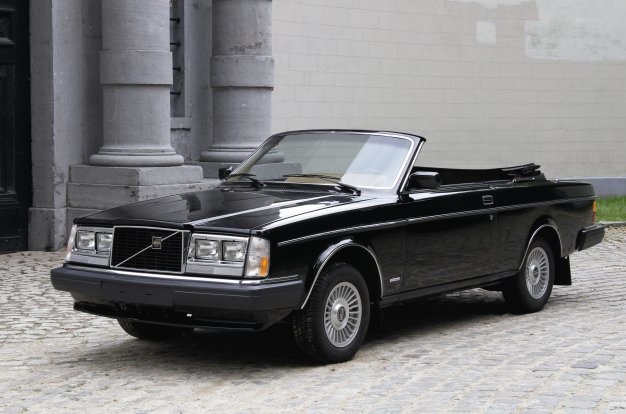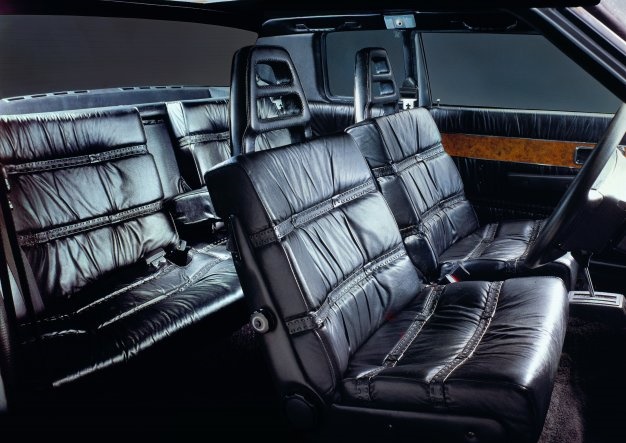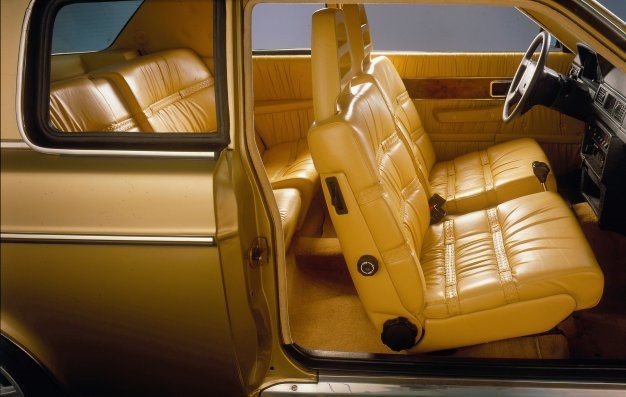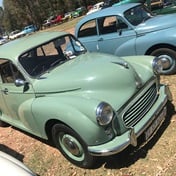Sweden - Forty years ago, Volvo changed perceptions of what its brand stood for. The Volvo 262 Coupé (262C) left no-one unmoved and sold significantly better than expected, despite costing more than twice as much as the basic model in the 200 series.
The original Volvo 264 sedan was presented in 1974, and two years later it was time for Volvo’s first six-cylinder estate: the 265. But that was far from the end of it – at the Geneva Motor Show of March 1977, perhaps the most unexpected model derivative saw the light of day: a two-door coupé with heavily slanted windscreen pillars and its roof lowered by 60 mm.
To perceive the car to be sleeker, the rear spare wheel pods were removed – the remainder of the body was identical to the 264.
What really turned the Volvo 262C into the iconic coupé it became could be found in the passenger compartment, where extravagant leather and hardwood abounded. The seats, headrests, door sides and even the curve handles were upholstered in leather.
5 things you should know about the Volvo 262C:
1 The 262C was not the first two-door model in the 260 series. From 1976-77, 3 329 262 GL models were manufactured exclusively for the North American market. They had a standard two-door body like the 242 but with a V6 engine and the far more exclusive front end from the 260 series.
2 The 262C is the only Volvo ever to have been be delivered from the factory with vinyl over a steel roof.
3 The unique prototype built by Coggiola is now part of the Volvo Museum collection in Gothenburg.
4 The independent firm Solaire built a cabriolet edition of the 262C on behalf of Volvo Cars of North America. Only five units were ever produced.
5 Volvo’s then-CEO Pehr G Gyllenhammar had a specially-made 262C as his company car. It was painted red and its entire interior was also red – even the headrests. It did not feature the usual V6 engine, which had been replaced by the four-cylinder B21ET turbo engine. The body frames and grille were in matt black, which heralded the high black grill that the GLT and Turbo would feature in 1984.
Do you own a classic Volvo? Share your story and images with us!
Image: Quickpic
The history
When the iconic Volvo 1800ES was discontinued in 1973, there was no natural successor in the role of Volvo’s top-line sports model. Volvo’s then-CEO Pehr G Gyllenhammar saw this as a problem. It was especially important to have a model of this nature in Volvo’s biggest export market (USA) and a new luxury coupé seemed more fitting at the time, rather than another sports car.
Volvo’s then-chief designer, Jan Wilsgaard, produced sketches for the design of the prestigious new car, but no clay model was ever built. Instead, he used a Volvo 164 that had been used to test new interiors. It was taken to Italian designer Sergio Coggiola’s in the Italian city of Turin, where the four-door body was rebuilt into a two-door with a lowered roofline.
The roof was clad with vinyl and the wide C-pillar adorned with three crowns – Sweden’s heraldic national symbol. On the production car, the three crowns were replaced by slightly larger versions – one of the very few differences between the production version and the prototype.
Image: Quickpic
The engine
The engine in the 262C was initially a 2.7-litre, 104 kW V6. It was shared with all the other body versions in the 260 series and had been developed together with Peugeot and Renault. Manufacturing took place in Douvrin in France under the auspices of the Société Franco-Suédoise de Moteurs-PRV company. Volvo’s engine designation was B27E and thanks to engine blocks and cylinder heads made from aluminium, it weighed less than 150 kg.
Such a niche product, built in small numbers, didn’t fit into the Volvo plant’s planning in Gothenburg. Instead, final assembly took place at the Italian Carozzeria Bertone, where the 264TE limo was also built. Kits were sent to Turin where the bodies were modified, painted and assembled into finished cars. A small badge on the lower edge of the front windscreen showed that Bertone had built the car.
Image: Quickpic
For the first few years, the 262C was only available in silver metallic with a black vinyl roof. From 1979, it was also available in gold metallic with a normal, painted roof. That year, all saloon models in the 200 series also received a new rear end with a boot that turned downwards at the rear edge. The tail lights were also refreshed and wrapped around the body corners. In 1980, black, light blue metallic and silver metallic with vinyl roof colour options were phased out. In the USA, the model was sold under the “Volvo Coupé” nameplate from 1980 onwards.
The model year that stands out the most was also the 262C’s last. In 1981, the 200 series underwent a major update with new, more slender bumpers and a new headlight set up. The B27E became a B28E as the engine gained in terms of cylinder volume and produced an extra 10 kW. The new colour combination was a two-tone paint job in gold and ‘nougat’.
Image: Quickpic
The aim was to manufacture 800 units per year, but expectations for demand had been set far too low. Apart from in 1977 when production started late in the year, and the final model year, production figures were more than double the forecast. When the final cars were sold in 1981, they were already considered to be collectibles. In total, 6 622 cars were built between 1977 and 1981.
It was only in 1985 that the successor to the 262C was presented, the Volvo 780. The collaboration with Bertone continued, but the 780 was both designed and built in Italy.




 Publications
Publications
 Partners
Partners


















